How to grow Swiss chard – tips for prolific and repeated harvests of colorful stems
How to get a relatively fuss-free bumper crop by growing Swiss chard from seed in your vegetable garden

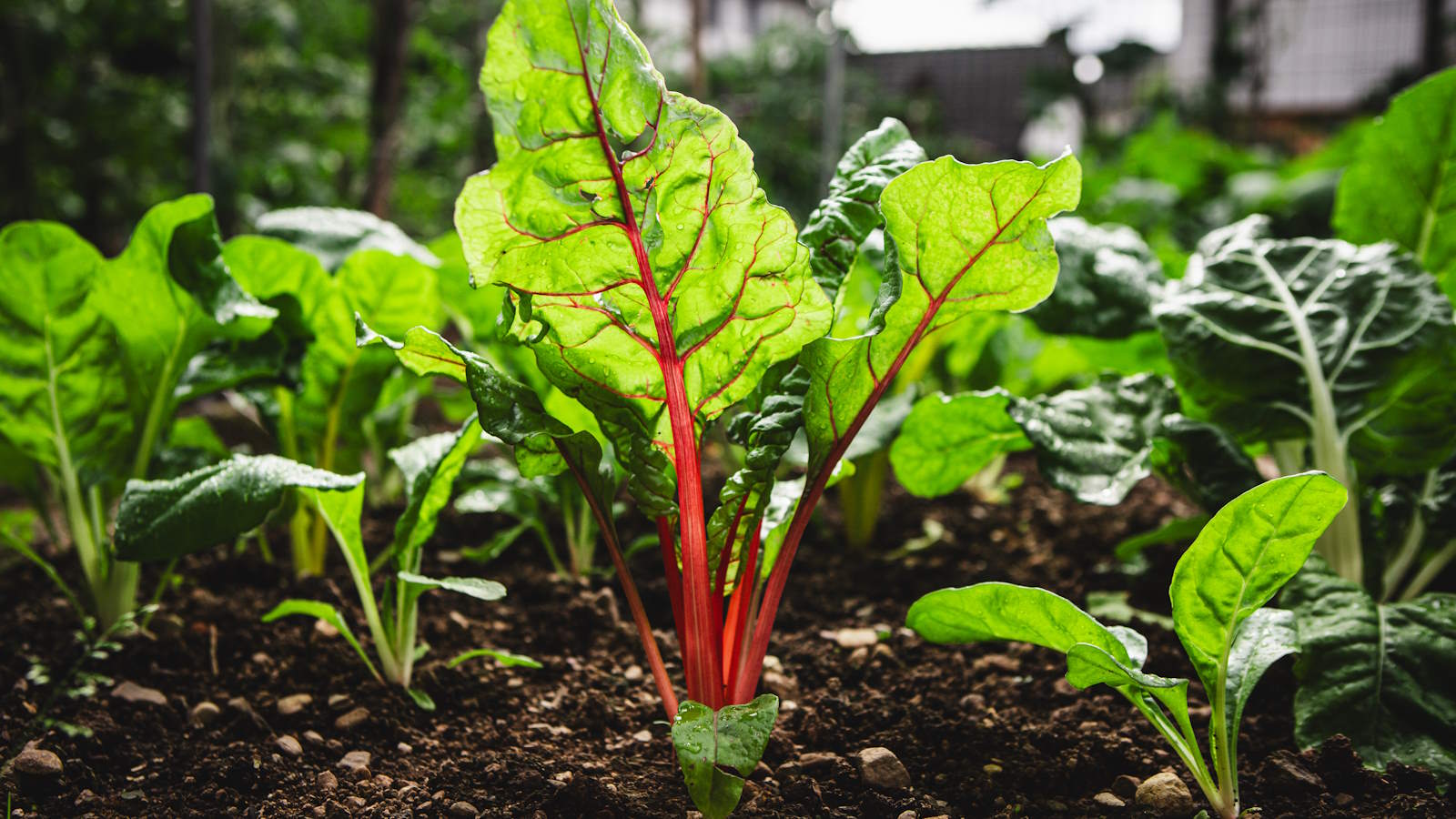
Swiss chard is a fantastic leafy green vegetable to grow at home. It is simple to grow, attractive, and delicious - and it has become a very fashionable crop in recent years for all of those reasons.
I have cultivated many different varieties in vegetable gardens, both at work and at home. It has always been a low maintenance yet highly productive crop, providing a large harvest of Swiss chard, and the colors it comes in can brighten up any kitchen garden.
Chard all-round is a very easy vegetable to grow. It is definitely a great crop for beginners to discover the joys of homegrown veg and a crop that I will continue to grow every year. Here are some top tips I have picked up about how to grow Swiss chard successfully from my years of cultivating this astounding crop.
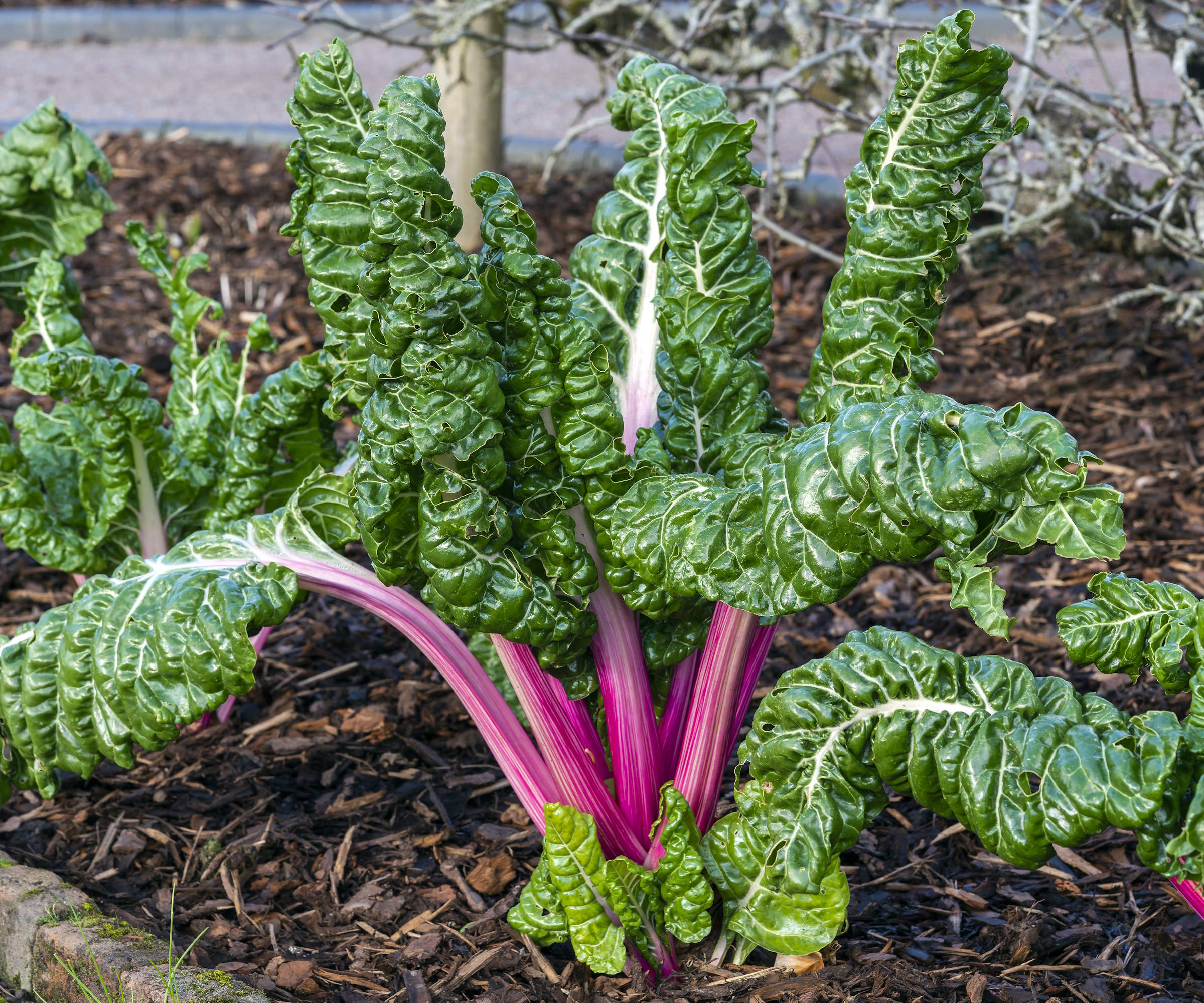
Growing swiss chard adds color to any vegetable garden
How do you grow Swiss chard?
Swiss chard is commonly grown from seed each year, though you can buy young plants from nurseries or online to plant straight into the garden.
There are many different varieties of chard to grow, including ‘Rhubarb’ chard that is bright red, ‘Bright Lights’ that is vivid yellow, and ‘Pink Flamingo’ that is, as the name suggests, pink. You can also get packets of rainbow chard, varieties such as ‘Bright Lights' that grow stems of all different colors. The range of varieties available to grow from seed tend to be wider than young plants commonly seen to purchase.
You can see the range of chard seeds available to buy at Burpee
How to grow Swiss chard from seed

Swiss chard can be grown from seed either indoors or outdoors
Swiss chard seeds can be planted either indoors in pots, or outdoors straight into the soil, and the crop can be sown throughout the year to provide a long harvest of leaves for all your culinary needs.
Design expertise in your inbox – from inspiring decorating ideas and beautiful celebrity homes to practical gardening advice and shopping round-ups.
The earliest sowings can be made in spring, to provide a harvest in summer and fall. Seeds can be sown directly into the ground in mid-to-late spring after the risk of frost has passed. The soil wants to be at least 50°F for seeds to germinate successfully.
The seeds themselves are quite large and should be planted an inch deep in drills made in the soil. Space each seed around 2-4 inches apart - to ultimately be thinned to six inches between plants - in rows 12 inches apart.
Another sowing of chard seeds can be made in mid-summer, to provide a harvest throughout winter and the following spring. This sowing should be made around ten weeks before the first frosts are expected in your US hardiness zone.
Swiss chard seeds can be started indoors. This is beneficial earlier in the year if you live in a climate that has longer and colder winters. There is also the advantage with a later sowing if you are planning successional planting and want the chard to follow another crop. You can start the plants in pots, ready to transplant seedlings out once the other crop has finished.
The earliest sowings indoors can be made indoors in a greenhouse, or on a warm windowsill, around early spring and the seedlings will be ready to transplant once the risk of frosts have passed. Sow the seeds into modules or small pots filled with a good potting soil designed to start seeds in, such as this organic seed starting potting mix available at Amazon.
Transplanting seedlings started indoors is useful to avoid slugs or snails from nibbling young seedlings that germinate.
Where to grow Swiss chard
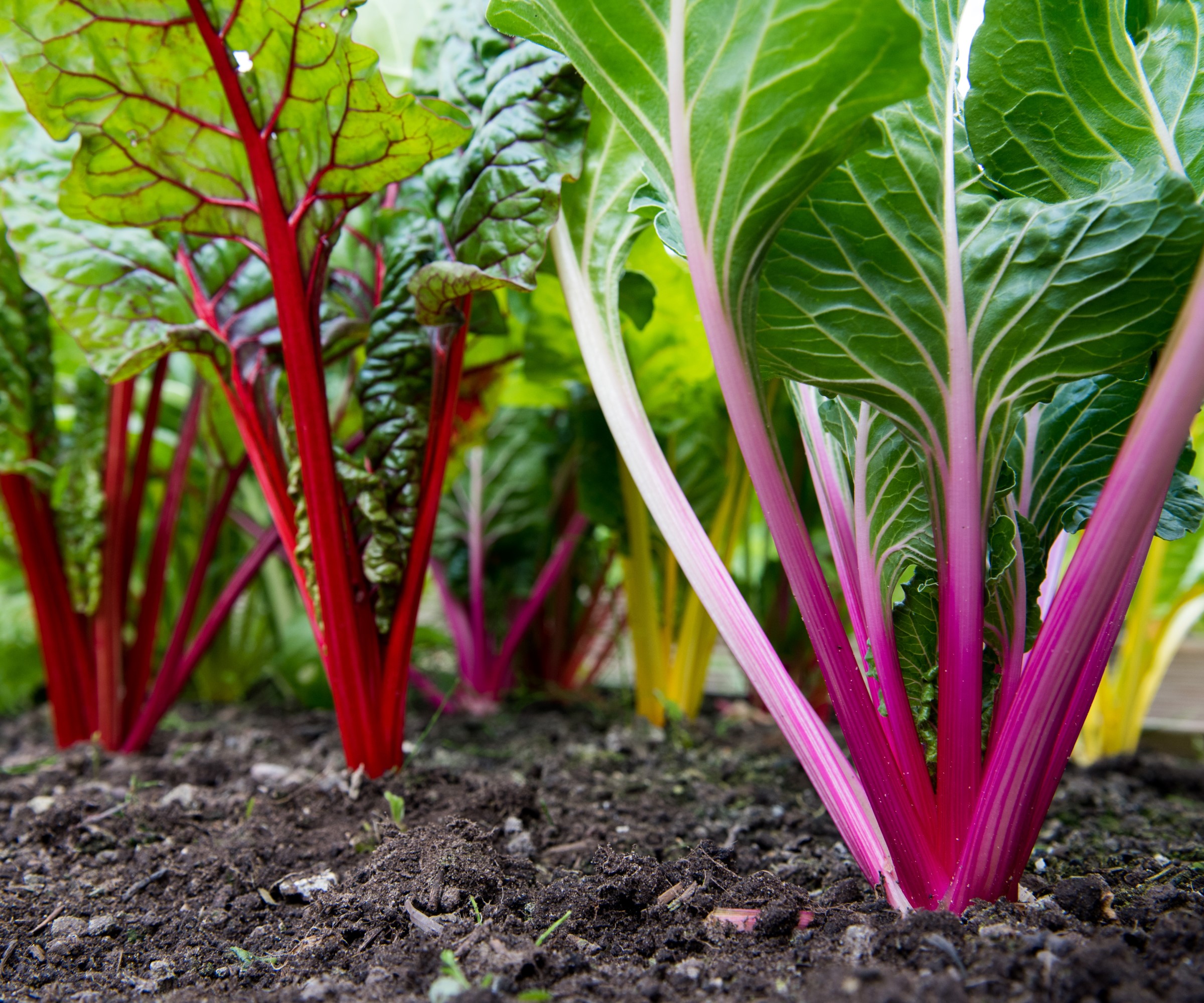
Plant Swiss chard in a spot with lots of sunshine
Swiss chard is a plant that wants to grow in full sun, it does tolerate partial shade but will grow at its best in a sunny position in the vegetable garden. Plants prefer a soil type that is fertile and well-draining.
The addition of a lot of organic matter prior to planting, such as compost or well-rotted manure, can improve the soil health and fertility. Alternatively, apply some general and balanced fertilizer to the site. Thoroughly weed the ground and rake the soil to a fine tilth ahead of sowing.
How to care for Swiss chard
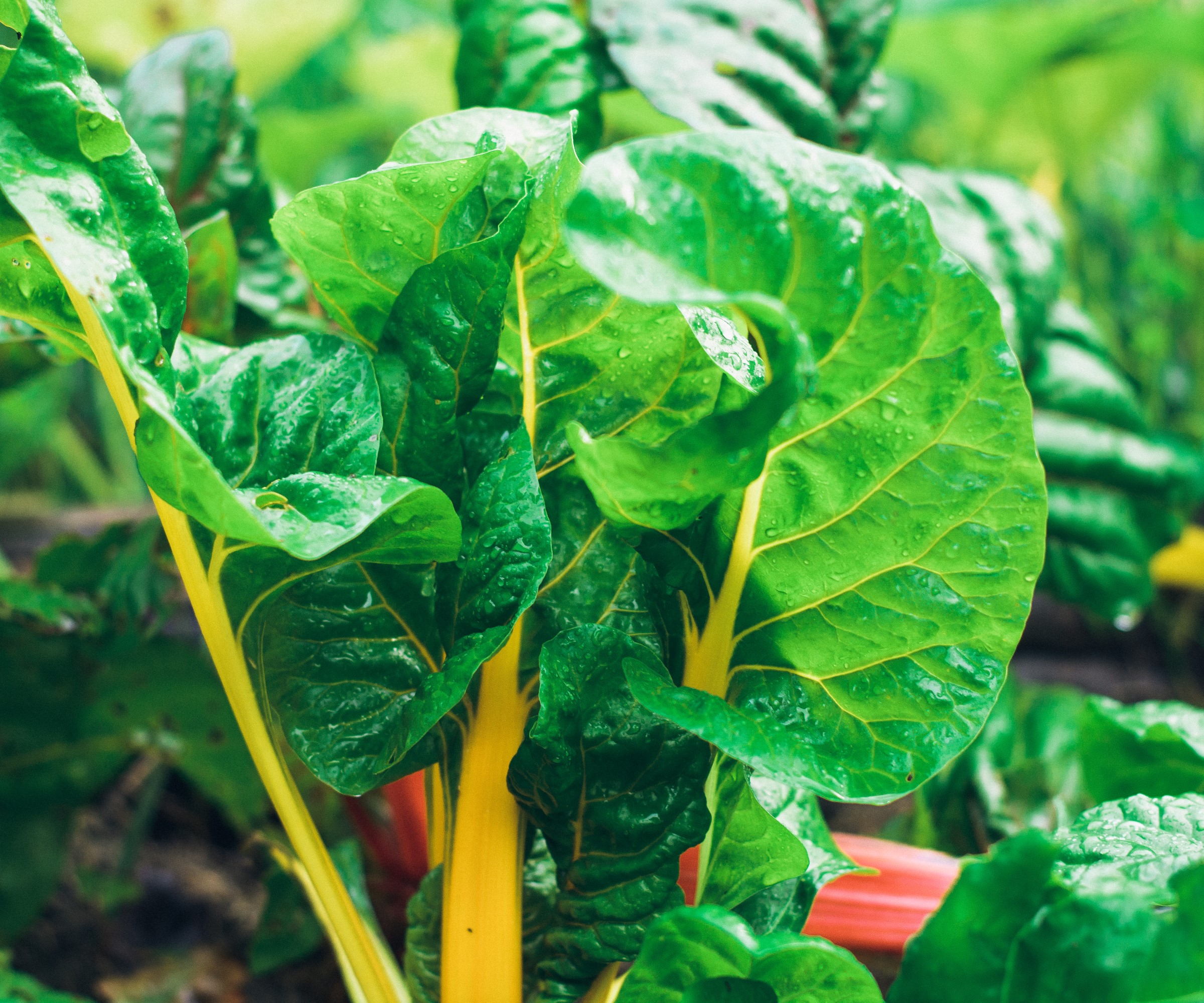
Swiss chard leaves can be harvested individually over a long time
Regularly remove weeds from around the chard plants, to prevent them competing for valuable water and nutrients. The simplest, and quickest, way to eliminate weeds is to run around the plants with a garden hoe every week to remove the small weed seedlings that spring up.
Mulching is also very beneficial as a layer of mulch around chard plants will smother weeds, as well as improve the moisture-holding capacity of the soil and supply nutrients to plants as it breaks down. Spraying chemical weed killers is not recommended around edible plants.
Swiss chard plants require consistent and regular watering throughout the growing season, especially when they are young. They are a drought tolerant vegetable once established, but do benefit from regular watering. In the summer months, a lack of water can cause Swiss chard plants to bolt and run to seed.
Maintain a close eye on when to water plants during hot periods, as it will be important to keep the soil moist in summer to stop the plants bolting. If the plants do start to bolt, cut off the flower stalk that starts to form and the plants will be fine to keep producing leaves to harvest.
The crop often does not need any additional fertilizer during the growing season, especially if you added organic matter or a balanced multi-purpose fertilizer, available at Amazon, at the time of planting. If the plants do not grow as quickly as you hoped, feeding them with a balanced liquid fertilizer can help to give them an extra perk of growth.
Swiss chard can be picked as either baby leaves, or fully-grown mature leaves. In terms of when to harvest Swiss chard, it can take only around 35 days to start harvesting baby leaves while it can be more like 50-60 days to go from sowing seed to getting mature leaves to pick. The exact days to maturity will depend on when and where you sowed the seeds, along with the weather during the growing season,
There are options for harvesting. It is possible to harvest individual leaves, as picking the oldest outer leaves when they are 8-10 inches long will encourage younger leaves to continue growing for continual harvests over a long period. The alternative is to cut the entire plant, harvesting all the leaves but leave the crown of the plant intact to sprout a new crop of leaves.
You can extend the harvest by protecting plants during the winter. Swiss chard plants are hardy, however, they can be damaged by the cold weather. Using row covers or placing cloches over plants from late-fall onwards can keep plants in good shape and provide harvests well into the colder months.
How to grow Swiss chard in containers
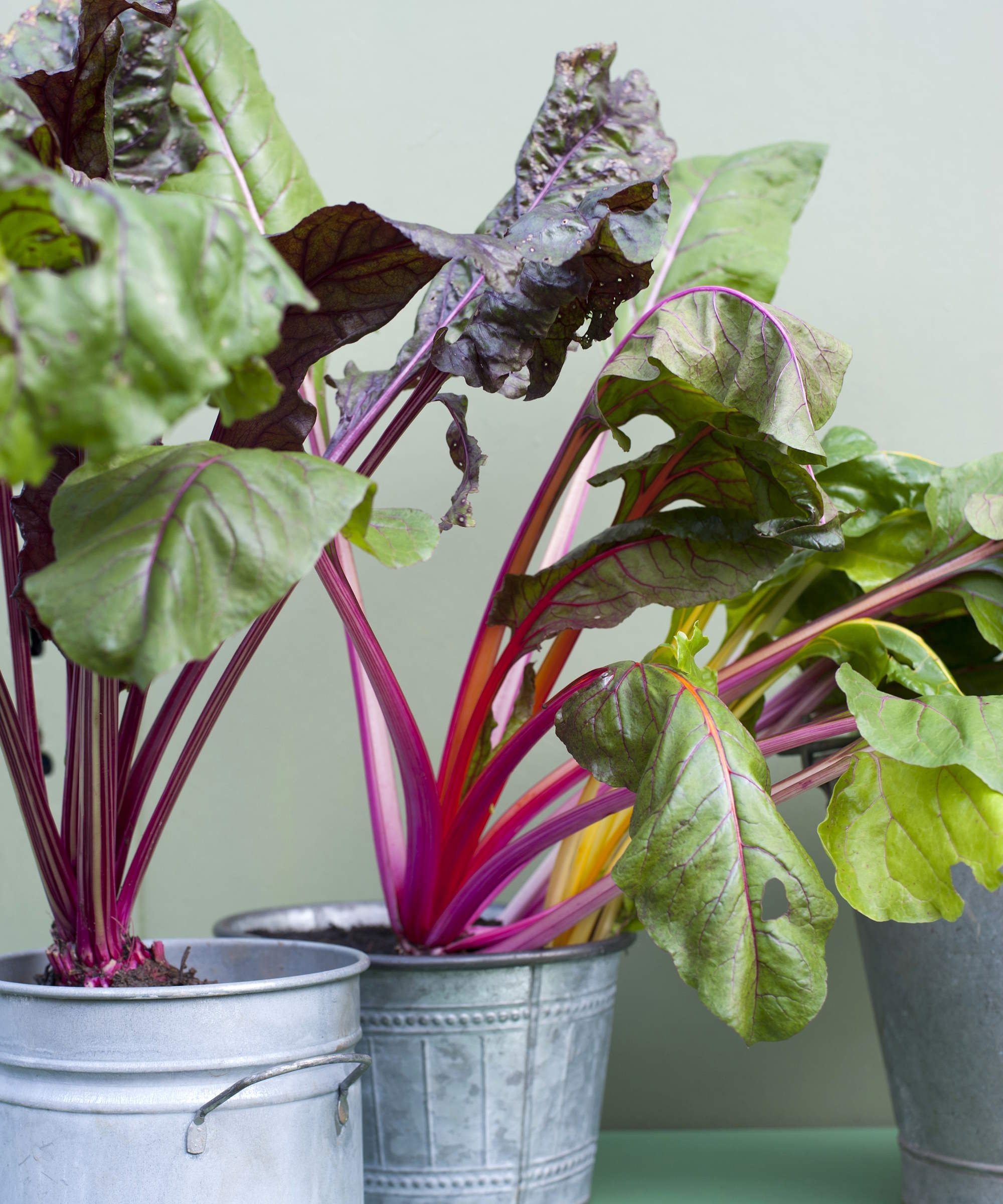
Swiss chard can grow happily in containers
Swiss chard is one of the best vegetables to grow in pots, overall it is a great crop for a vegetable container garden and it means you can cultivate the plants on a deck, patio, or even on a balcony. Any container should be relatively wide, but does not have to be very deep as they are low-rooting plants. A container that is 12 inches wide and 12 inches deep can easily contain one plant, while a 10-gallon pot can house two plants to get good-sized leaves to harvest.
Any container or planter needs to have holes in the bottom for drainage and be filled with a good quality potting soil, such as this premium organic potting mix at Burpee. Do not consider reusing old potting soil, or use old garden soil in pots - this will likely lead to poor germination and unhappy plants.
Seeds can be sown thinly directly into the soil and then covered with another thin layer of compost. Water the container gently and then thin the seedling as they appear to a spacing of around six inches.
Place the container into a sunny spot in the backyard and keep the soil moist throughout the season. Bear in mind that plants in containers will require watering more often than plants in the ground. Feed crops in pots every few weeks during the season with a liquid fertilizer.
FAQs
Does Swiss chard grow back every year?
Chard is a biennial plant that can overwinter in the vegetable garden and continue growing again come spring. The plant can survive temperatures down to 15°F, so may need protection with frost cloth or straw if you do want to overwinter chard in colder climates. Or plants can be lifted and transplanted into a greenhouse to crop through the colder months. You will get another crop of leaves in the second year, before the plant will want to go flower and go to seed.
How tall does Swiss chard grow?
Different varieties of Swiss chard will ultimately reach different heights, however, most chards generally grow to around 18-20 inches in height. The exact height will depend on the growing conditions, the amount of water and feed they get, and also how regularly you are picking the leaves. The tallest type of Swiss chard is ‘Fordhook Giant’ and this popular variety can reach 24 inches in height - you can get 'Fordhook Giant' seeds at True Leaf Market.
Growing crops that allow for repeated cuttings or can be treated as cut-and-come-again, such as Swiss chard, allows you to get lots of harvests from one plant. Other great crops for repeated harvests to consider cultivating include growing arugula, spinach, or kale.

Drew has worked as a writer since 2008 and was also a professional gardener for many years. As a trained horticulturist, he worked in prestigious historic gardens, including Hanbury Hall and the world-famous Hidcote Manor Garden. He also spent time as a specialist kitchen gardener at Soho Farmhouse and Netherby Hall, where he grew vegetables, fruit, herbs, and cut flowers for restaurants. Drew has written for numerous print and online publications and is an allotment holder and garden blogger. He is shortlisted for the Digital Gardening Writer of the Year at the 2025 Garden Media Guild Awards.